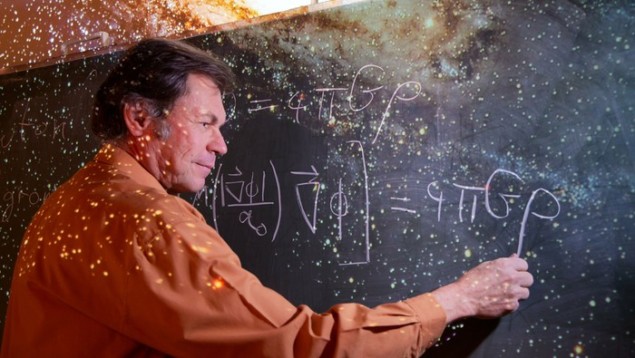Modified gravity describes how open star clusters ‘dissolve’
09 Nov 2022
Modifying gravity: Pavel Kroupa and colleagues have shown that Modified Newtonian Dynamics does a good job at describing the properties of open clusters of stars. (Courtesy: Volker Lannert/University of Bonn)
An alternative description of gravity does a very good job of predicting how newly formed star clusters break apart – according to an international team of astronomers. They used new mathematical techniques to show that Modified Newtonian Dynamics (MOND) can reproduce the asymmetry and lifetime of open stellar clusters that have been observed by the Gaia space telescope.
The research was done by Pavel Kroupa at Germany’s University of Bonn, Tereza Jerabkova, now at the European Southern Observatory in Germany, and colleagues.
Open cluster of stars forms rapidly from large gas clouds. When the stars begin to shine, the remaining gas is blown away and the cluster begins to expand. Initially, an open cluster could have as many as a few thousand stars, but after a few hundred million years the stars will have gone their separate ways as the cluster “dissolves”.
Tidal tails
As a cluster travels through space, departing stars accumulate in two “tidal tails”, one pointing in the direction of travel and the other trailing the cluster.
According to Newton’s theory of gravity, roughly the same number of stars should accumulate in the leading and trailing tails. So far, this prediction has been extremely difficult to confirm, which involves identifying a small number of stars with similar velocities and ages within a background of millions of stars.
Rising to the challenge, Jerabkova developed a new mathematical technique for identifying stars belonging to specific open clusters. Now, the team has used the technique to analyse open clusters that have been observed by ESA’s Gaia space telescope.
Exit at the front
The researchers found that a far greater number of stars tended to leave the clusters via the leading tail than did from the trailing tail. This is contrary to Newton’s theory, which predicts equal numbers in each tail. Instead, the observations align closely with predictions of Modified Newtonian Dynamics (MOND). Developed in the 1980s by the Israeli physicist Mordehai Milgrom, MOND aims to explain the motions of galaxies without invoking dark matter.READ MORE

The team also found that MOND is better than Newton at predicting the lifetime of open clusters. MOND gives a significantly shorter lifetime, which agrees with observations that continue to puzzle astronomers.
The team acknowledges that their mathematical analysis has been relatively simple, and further improvements will be required for more robust tests of MOND’s predictions. For now, MOND remains a controversial theory – but if its predictions can be confirmed for open clusters, it could have far-reaching implications for our understanding of gravity.
The research is described in Monthly Notices of the Royal Astronomical Society.
Sam Jarman is a science writer based in the UK.
From physicsworld.com 15/11/2022

Δεν υπάρχουν σχόλια:
Δημοσίευση σχολίου